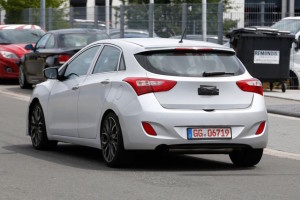

Hyundai is counting down to its first N car, a sub-brand along the lines of the high-performance Mercedes-AMG and the BMW M divisions.
But, like the high-end Germans, it admits hybrid and fuel-cell technology will ultimately become the powertrains of choice.
Hyundai has the components it needs for a hybrid with its Ioniq model, a range of hatchbacks offering petrol-electric, battery-electric, and plug-in powertrains.
Said engineer Albert Biermann, head of the N sub-brand: “We’ve looked at how we could incorporate that (technology). At the moment we can build the performance car we want while meeting emissions regulations, but it’s only a matter of time before we’ll have to look at hybrid and fuel-cell technology for N cars.”

The first of the N cars will be the i30 variant, expected to land in New Zealand later next year and likely to be powered by a turbocharged 2.0-litre engine, similar in output to the unit Hyundai used in the Nurburgring 24-hour test run in late May.
The video below (See View All) shows footage of the engine on the dyno and offers a glimpse of outputs of 195kW/310Nm. Hyundai will launch its go-faster ‘N’ brand with two versions of the i30 hatchback, one offering more oomph and technology than the other.
But it’s not known if both will be available in right-hand drive for New Zealand. Hyundai NZ general manager Andy Sinclair said he expected the i30 N late next year. “It looks likely – that’s as much information as I have,” he said.

“It’s completely unofficial. It’s us piecing the puzzle together from what we know is being developed. We are making assumptions that it will be available to us in right-hand drive.”
The front-drive i30 N is expected to break cover at the Paris motor show in September before going into production for left-hand-drive markets. Engineer Biermann has confirmed there will be both standard and ‘performance pack’ variants. The more powerful is likely to run a boosted 2.0-litre engine delivering around 195kW/310Nm.
Peugeot did something similar with its 308 GTi 250 and 270. Some markets, like Australia, picked up both models; others, like NZ, went with the 270 and its extra power, sportier stability system, slick front differential, and bigger brakes.
 Biermann, a former BMW M engineer, told motoring writers in Europe that he wants N cars to perform like race cars. “With a race car, you want high speed on the straight, the ability to brake late and turn in sharply to a corner, good mid-corner speed and the ability to start accelerating out of the corner as early as possible,” Biermann said. “We want the same from our high-performance vehicles.”
Biermann, a former BMW M engineer, told motoring writers in Europe that he wants N cars to perform like race cars. “With a race car, you want high speed on the straight, the ability to brake late and turn in sharply to a corner, good mid-corner speed and the ability to start accelerating out of the corner as early as possible,” Biermann said. “We want the same from our high-performance vehicles.”
The i30 N will come with a six-speed manual, although Biermann said a dual-clutch automatic would be available later in the production cycle. The exhaust blurts on upshifts in the video below giveaway the test car is using a dual-clutch gearbox.
Expect i30 N to get a reinforced chassis, slicker gearshift, stiffer engine and transmission mounts, limited-slip differential, mechanical power steering, and uprated suspension.
“This won’t be the most powerful car in its class or necessarily have the fastest lap times at particular circuits,” said Biermann. “The N brand is all about driving fun – maximum horsepower is not the key element for this.”
Hyundai dissected the hot hatchback market when developing the i30 N. “We looked at all kinds of cars, higher horsepower and lower horsepower, and we defined our own spot,” said Biermann.
“Some cars are good for day-to-day driving but not enough fun to push; others are too focused on the track. We’ve tried to find our own way to bring the two worlds together as nicely as possible.”
Would the next-generation i30 platform be suitable for an N car with all-wheel drive and more power? “If we decide something would be good for customers, we’ll find a way to make it happen,” said Biermann.
